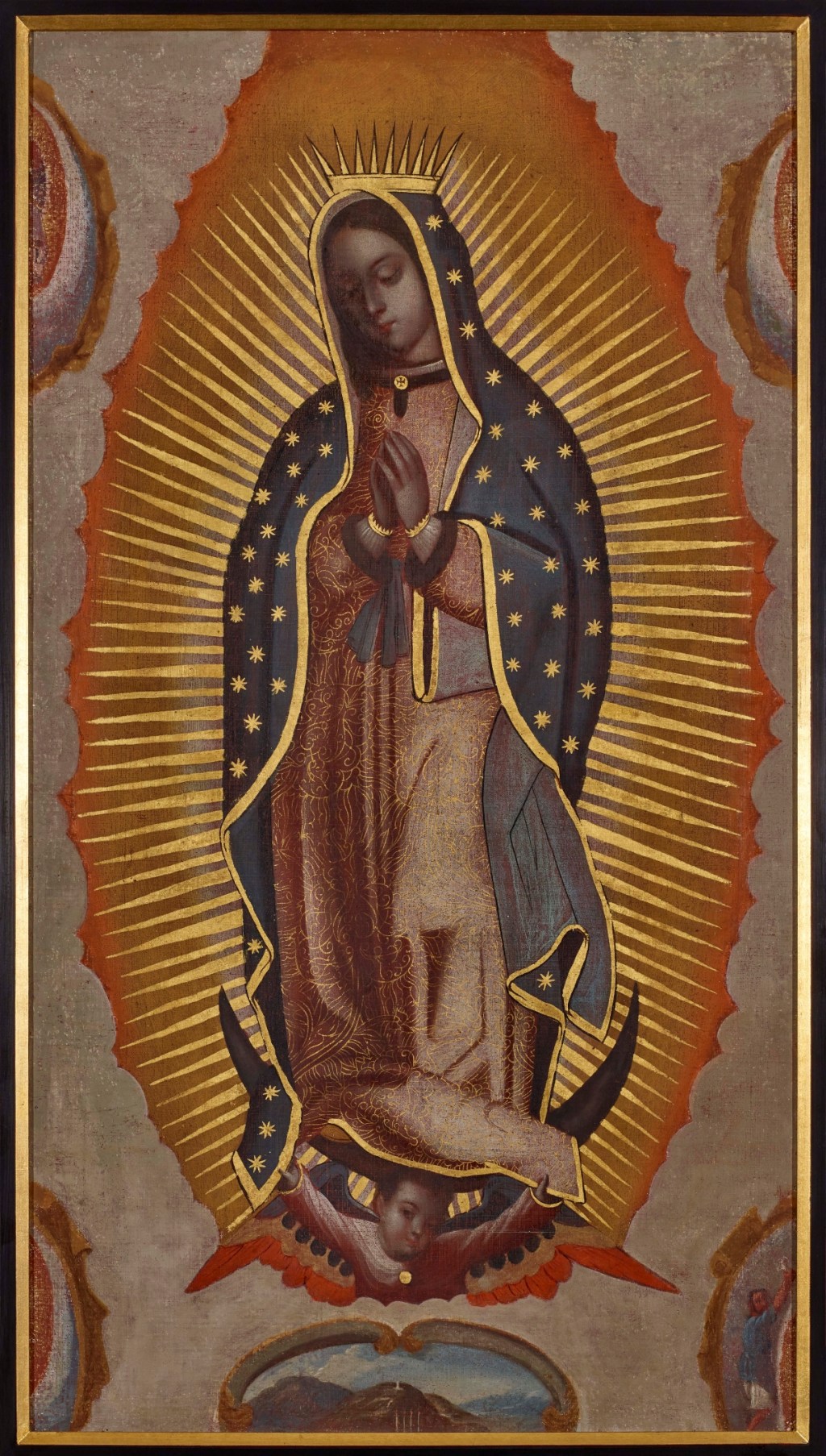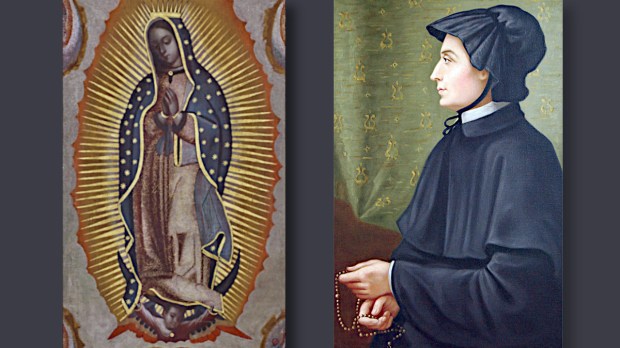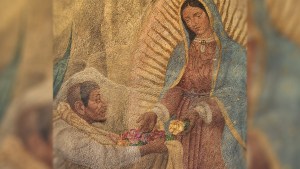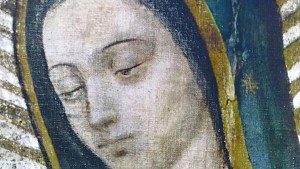Visitors to the National Shrine of St. Elizabeth Ann Seton may be surprised to discover an oil painting of Our Lady of Guadalupe on display in the shrine’s new museum. This image was given to Mother Seton in the year 1811 by her friend Mathias O’Conway, who was also the father of the first woman to join her new order, the Sisters of Charity. The painting of Our Lady hung for many years over the altar of the chapel in St. Joseph’s House, the order’s first house of community in Emmitsburg, Maryland.
Ongoing research suggests that the oil painting may have been the first image of Our Lady of Guadalupe in the U.S., at least as it then existed. According to Notre Dame professor Tim Matovina:
“If you take the broader view that the Catholic history of the United States begins when Catholic settlers arrive, then there are plenty of Guadalupe images in the Southwest before 1811. But in 1811, none of those territories were part of the United States yet.”
Matovina believes that this particular painting of Our Lady of Guadalupe “is the first one that existed in the territorial boundaries of the United States.”
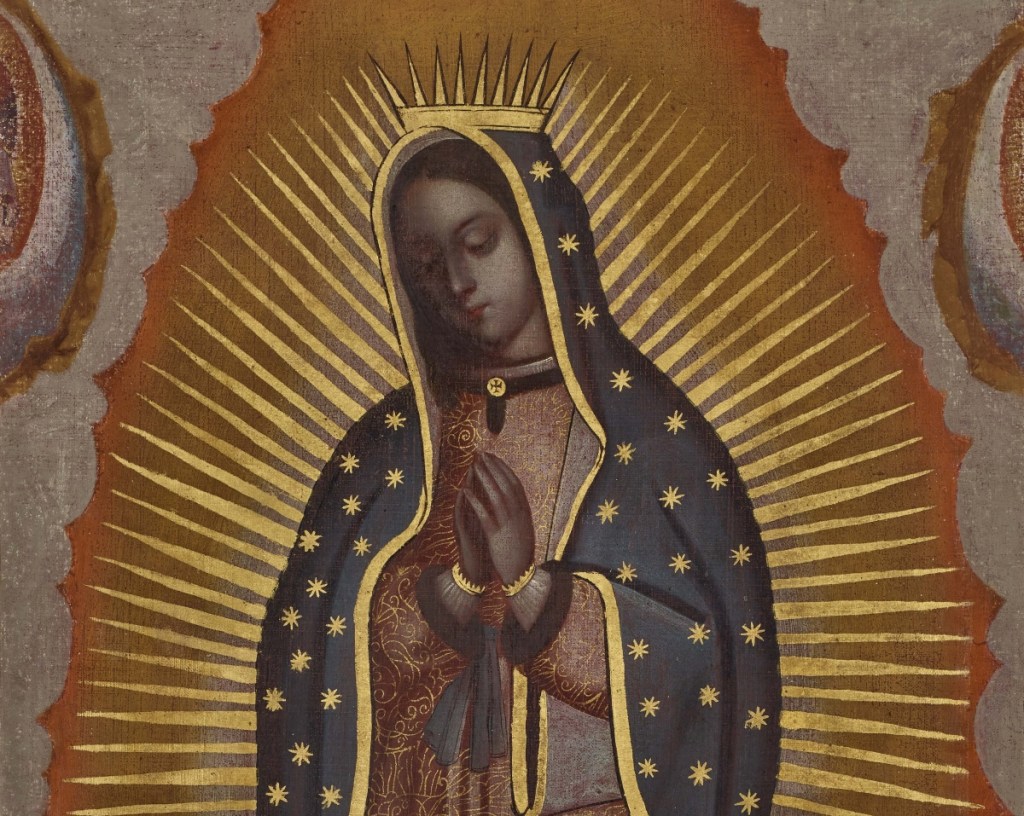
A mysterious lady
Whether Mother Seton would have known about Our Lady’s apparitions to Juan Diego in 1531 or about how her image was miraculously transferred to his tilma is doubtful. According to Tony Dilulio, the Shrine’s Programs Director, there are no specific references in Mother Seton’s writings to Our Lady of Guadalupe.
What is certain is that Mother Seton had a deep devotion to the Virgin Mary and treasured the painting as a special image of “Our Adored.” Mother Seton had the painting hung prominently over the altar of the order’s chapel, so she and her sisters would have had a daily occasion to pray and meditate before it. Our Lady of Guadalupe would therefore have played a prominent role in their spiritual lives.
Longing for a mother
Elizabeth Ann Seton had lost her own mother at the age of three. Though she herself would mother five children, she always longed for a mother figure in her own life. It was in Italy, following the death of her husband William in 1803, that Elizabeth Ann unexpectedly developed a deep, personal attachment to Our Lady as the answer to this longing.
One day while in distress, she came upon the Memorare of St. Bernard in a friend’s prayer book. At that moment, “I felt really I had a Mother, which you know my foolish heart so often lamented to have lost in early days, — from the first remembrance of infancy I have looked in all the plays of childhood and wildness of youth to the clouds for my Mother, and at that moment it seemed as if I had found more than her, even in the tenderness and pity of a Mother — so I cried myself to sleep in her heart.”
“Love me, my Mother!”
Mother Seton would go on to personally translate the Memorare a number of times, including this translation:
Remember O most pious Virgin Mary that no one ever had recourse to you, implored your help or sought your mediation without obtaining relief. Confiding then on your goodness and mercy, I cast myself at your sacred feet, and do most humbly supplicate you O Mother of the Eternal Word to adopt me as your child and take upon yourself the care of my eternal Salvation. O let it not be said my dearest Mother that I have perished, where no one ever found but grace and Eternal Salvation. Love me, my Mother!
Elizabeth Ann Seton also embraced the belief in Mary’s Assumption long before it became official Church dogma. “Happy, happy Blessed Mother,” she once wrote, “you are reunited to Him whose absence was your desolation. Pity me; pray for me. It is my sweet consolation to think you are pleading for the wretched poor banished wanderer.”
An answered prayer
Was this oil painting the first image of Our Lady of Guadalupe in the U.S.? The question may never be answered for certain. Amid the speculation, there is one other piece of the puzzle that should not be missed, however: The arrival of this unique painting in Mother Seton’s chapel, far from Mexico or any knowledge of the events in Guadalupe, was itself something of a miraculous occurrence, a loving response to a woman who had once begged Mary to “adopt me as your child.”
Recall that Mary’s message to Juan Diego was precisely this: “Am I not here, I who am your mother?”
When visitors look at this particular work of art, they will hopefully see not just a holy image of the Virgin Mary, but also a concrete answer to St. Elizabeth Ann Seton’s prayers. This beautiful gift from Mathias O’Conway was also a gift from a “dearest Mother.”
Our Lady of Guadalupe had appeared to Juan Diego in 1531 in faraway Mexico. Centuries later, she also desired to reside with Elizabeth Ann Seton and her sisters in Emmitsburg, Maryland.
The painting of Our Lady of Guadalupe can be seen at the Seton Shrine’s new museum, which also contains many other rare and extraordinary relics and artifacts.
